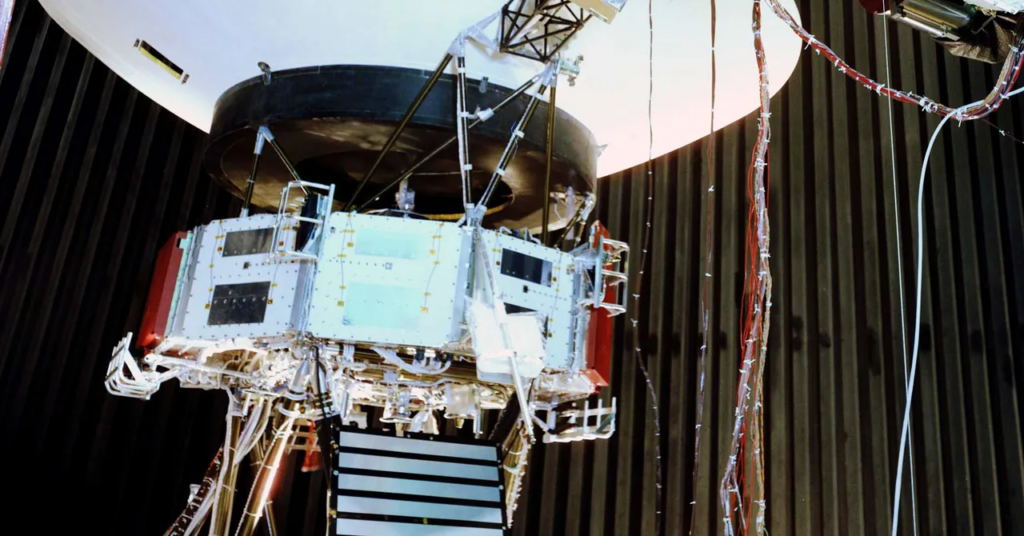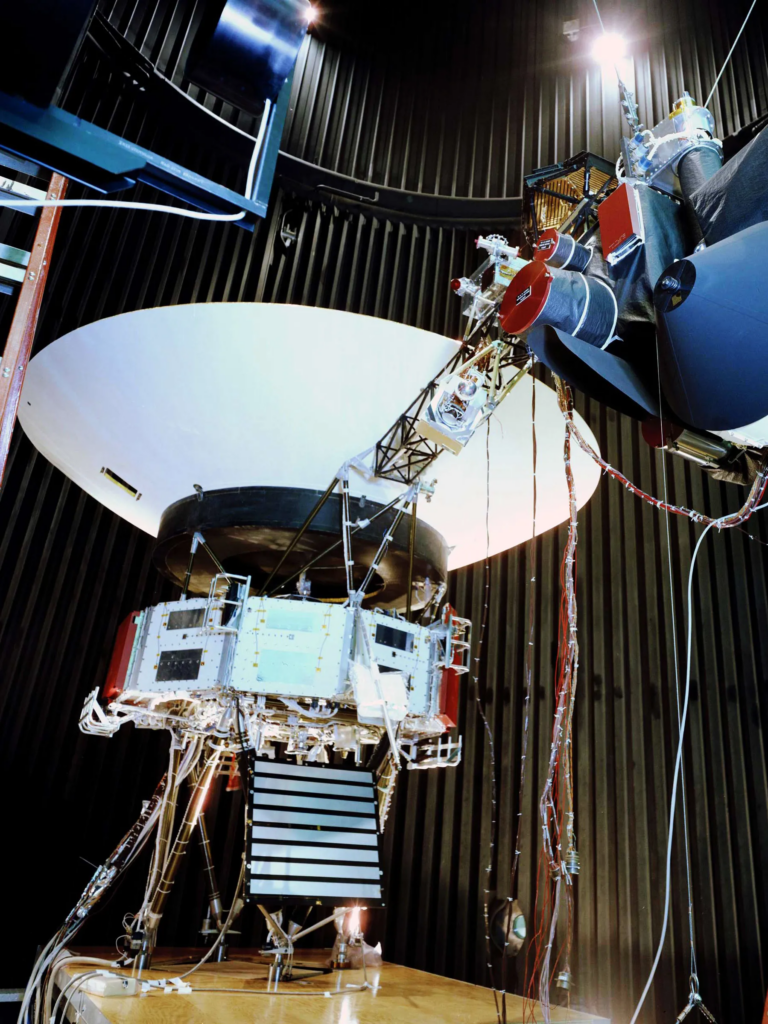NASA engineers developed a power-saving method to extend the Voyager probes’ exploration into interstellar space.
Since 1977, Voyager 1 and 2’s power sources have been decreasing, putting their equipment at risk. Solar power doesn’t work in outer space. Engineers gave each Voyager three radioisotope thermoelectric generators (RTGs). These generate energy from plutonium-238 decay heat.
They’re nuclear batteries dropping 4 watts each year. The Voyagers don’t require that electricity for propulsion, but they do need it to collect scientific data on distant charged particles and magnetic fields—humanity’s sole chance to do so in interstellar space.
A Power Upgrade Extends Voyager 2’s Mission in Space
NASA began investigating techniques to extend Voyagers’ instrument life two years ago. Start turning off science instrument heaters in 2019. The gadgets operated even at 50 degrees Celsius, significantly colder than their testing settings. At the end of March, a NASA team started an energy-saving method aboard Voyager 2 that used backup power to safeguard equipment from voltage spikes.
Suzanne Dodd, Voyager project manager at NASA’s Jet Propulsion Laboratory in Southern California, says this method makes the craft more sensitive, but the probability of such increases seems minimal. If all goes well, Voyager 1 will begin voltage management this autumn.
Dodd believes this may extend the probes’ scientific mission by many years. She said Voyager is continuing a voyage of exploration, and every interplanetary data point is vital. “These spacecraft and the engineers who come up with clever ways to operate them continue to amaze me,” adds Dodd.
The 45-year-old Voyagers spent their first two decades traveling around the solar system, taking photographs of Jupiter, Saturn, Uranus, and Neptune. Voyager 1 also photographed Earth’s “pale blue dot.” They kept collecting data.
They outlived Pioneer 10 and 11, the first probes to fly past the gas giants, which shut down almost 20 years ago. Both Voyagers have left the Kuiper belt, home to Pluto and other frozen worlds. Voyager 1 entered the interstellar medium in 2012 after leaving the sun’s heliosphere. Six years later, its twin entered interstellar space at 35,000 mph.
Voyager 1 is 159 AU from home, whereas Voyager 2 is 133 AU in an opposite direction. Earth-sun distance is 1 AU, or 93 million miles. The spacecraft are aging—Voyager 1 had telemetry issues last year—but they keep working.
After accomplishing their goals, NASA missions often receive extensions. Opportunity, the Mars rover, lasted over 15 years. NASA and ESA’s Saturn-focused Cassini mission lasted 20 years instead of four. Voyagers win cosmically. Dodd’s team’s energy-conserving strategy might help them reach 50 and 200 AU by 2035.

Each science instrument must be sacrificed.
A magnetometer, plasma wave surveyor, plasma science experiment, cosmic ray detector, and low-energy charged particle detector operate on Voyager 2. The first two use 2W and include electronics in the probe body, so they’ll likely be turned down last. The others are on the craft’s boom, where it’s cold, and take 3–5 watts apiece, so turning them off would add a year.
Interstellar space has solar particles and magnetic phenomena to explore. “The further we get from the sun, the more interesting it gets because we don’t know what we might find. “Having two Voyager spacecraft is like seeing through binoculars,” explains JPL Voyager project scientist Linda Spilker.
Astrophysicists anticipated Voyagers to monitor the sun’s magnetic field gently rotating into the interstellar medium outside the heliosphere. Spilker adds they haven’t encountered such rotation, suggesting magnetic field models require upgrading.

October’s bright gamma-ray outburst was observed by the probe.
Newer missions will use Voyager’s solar science. NASA will scan the heliosphere using the Interstellar Mapping and Acceleration Probe (IMAP) in 2025. The Voyagers are already beyond the heliosphere, so their measurements may be compared to the new one.
“IMAP will be great with the Voyagers. “As we’re seeing imaging with IMAP, the Voyagers will also be making valuable measurements locally,” says Princeton physicist David McComas, who leads the IMAP collaboration. He compares it to a brain CAT scan and biopsy.
The Voyagers’ legacy is amazing. NASA’s 2015 New Horizons mission passed Pluto. That spacecraft, 55 AU from Earth, is probing the edge of the heliosphere with better sensors than the Voyagers, and it has taken images of Pluto’s moons and Arrokoth, a Kuiper Belt object.
The collaboration’s main investigator, Southwest Research Institute planetary scientist Alan Stern, calls the Voyager team “our heroes.” Stern predicts New Horizons may continue till 2050. The crew needs a new flyby target.
Inspired by the Voyagers’ achievements, engineers are constructing next-generation spacecraft that might be driven by lasers and lightsails and travel faster and deeper into interstellar space. How can they learn from the Voyagers’ longevity?
Dodd advises having enough of fuel and redundant systems since even good instruments fail. In case the vessel outlives its engineers, she argues, information must be passed on.
